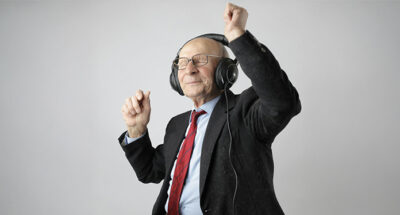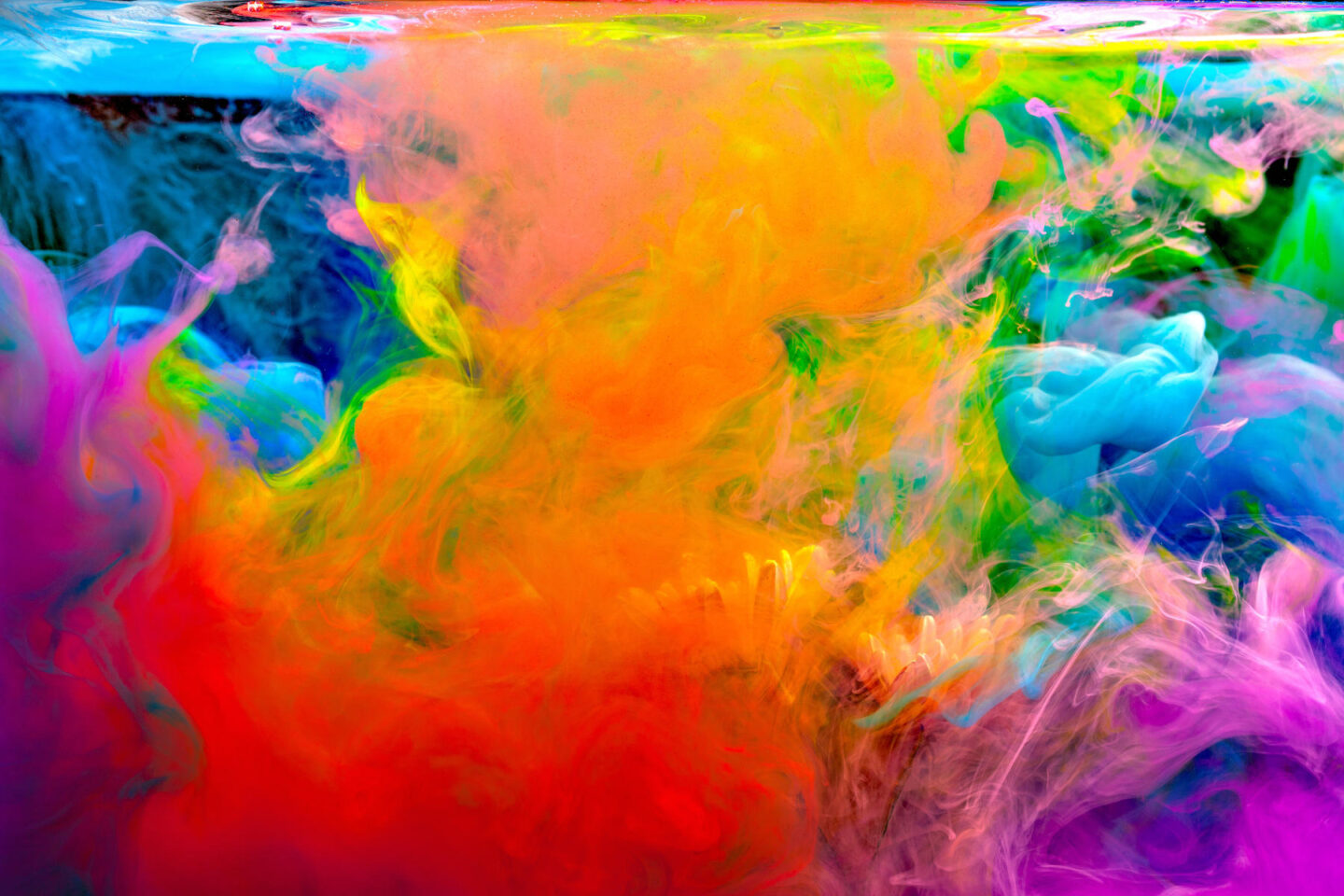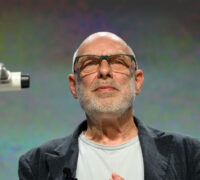
How elixir of longevity will alter life as we know it
Aging is now seen as a modifiable biological process. Longevity science is reshaping healthcare, careers, and society for longer, healthier lives....
Audio available
June 28, 2024 • by Brian Eno in Innovation
Art is a powerful source of understanding and fundamental to creating the future world we want to live in, says Brian Eno....
I was at a dinner a few months ago, and the host’s 15-year-old daughter said, “I really want to be an artist, but my teachers say I’m too bright and I should go into the sciences.” It’s an epidemic in our education systems that smart kids are encouraged to go into STEM subjects (science, technology, and math) while others are sent into art streams. I think this is a very bad and dangerous attitude.
The arts are treated in the same way that Victorians treated play: grudgingly. Schoolchildren would get a very small amount of playtime because they considered learning times tables and conjugating Latin more important. At the moment, arts are viewed as nice and pretty, not very important, and certainly not worthy of government funding.
What does ‘art’ mean? In my definition, art is everything you don’t have to do. We have to wear something to keep us warm, but we don’t need designer fashions. We have to eat, but we don’t need balti curries or nouvelle cuisine. We have to communicate, but we don’t have to write poems or songs. We have to move, but we don’t have to dance. I suggest that all of those stylistic activities are what we call art.
So when I talk about art, I’m not just talking about paintings or records. I include things like knitting, cake decoration, and tattoos. All the many things humans do just because they like the feeling of them. Humans have evolved to enjoy the things that do them good, so what evolutionary role does art serve?
Take screwdrivers, for example. The blades are the same, and they’re made of steel – not marble, chewing gum, chocolate, or even gold. There are few ways of varying that design if you want a working screwdriver, but you can design the handle. Design means making aesthetic choices. What if you made screwdrivers with handles that people loved so much that you gave up on the blade end and just made the handles? Would you then be called a sculptor? Art explores the space beyond what’s functional.
Children do it through play. And what’s the reward for playing? Feelings. This feels good, that doesn’t. Playing is about experiencing things and discovering how they feel. What’s beautiful, ugly, right, wrong, annoying, comforting. Those feelings are your antennae.
As the neuropsychologist Mark Solms said, feelings and emotions are not “fluffy things.” Nothing could be further from the truth. They’re much more important than analytic philosophy. Feelings are how we navigate through our important choices: who shall I have a relationship with, which job shall I do, which team shall I support? What children are starting to do when they’re playing is discover their feelings and learn which ones to trust.

“Children learn through play, and adults play through art.”
Art is like this as well. Art is a safe place to have feelings. Children learn through play, and adults play through art.
When someone writes a novel, they are doing exactly what children are doing when they play: “Let’s pretend.” Our skill as humans is to imagine worlds that don’t exist and how we might feel within those.
Science is how we discover things, investigate them, and see how they work. Art is how we digest things and learn how to deal with the things we’ve discovered. Art is safe. It’s harmless. I can enjoy a book like 1984, even though it’s terrifying – I can close the book. I can leave the cinema. It’s not real life, there are no repercussions.
Art deepens our understanding of others. When we read fiction, we are exploring the world through different perspectives. We construct convincing narratives that invite us to exercise our ‘theory of mind’. We’re making worlds, and narratives give us the tools to make big packages of ideas. Artworks become metaphors for a whole cluster of them. If I asked you, “Are we living in 1984 or Brave New World?” we could have a conversation at a level of complexity that would not be possible without us having those shared narratives.

“Art synchronizes a civilization. It gives us a way of knowing we’re in step with each other.”
It’s clear how this works in narrative forms like books and films, but what about non-narrative art forms? Bracelets, cardigans: How do they communicate to us? What’s happening when we look at those? A haircut is an example of an artwork we all have. Why do we bother thinking about our hair? A haircut offers some vision of yourself: “I want to know what it would feel like to be this kind of person.” A haircut is a complicated and meaningful artwork. It sits on many different axes of possibilities: cool to wild, radical to conforming, funny to serious, sharp to soft, contrived to natural.
When you’re making a haircut choice, you might not articulate it but you’re navigating a multidimensional space. We read those spaces very well. From blatant signals such as a Trump baseball cap to the kind of glasses you wear (thick frames nowadays if you want to be taken seriously), we live in a world of signs, and they are all about positioning ourselves in relation to the world: who we might be and how we want to live.
Meaning, however, is always dependent on context. Objects have meaning related to previous objects within your experience. Art presents you with a world. It might be huge, like War and Peace, or it might be tiny, like an earring. It says: “How do you feel about this?”
In fiction, you know the states of mind of the characters, so you can make a hypothesis. And because you don’t actually know them as human beings, you can say anything you like about them. You can be unkind about them and no one gets hurt.
Art synchronizes a civilization. It gives us a way of knowing we’re in step with each other. A million years ago, all human beings were generalists – they hunted, foraged, built shelters. Nowadays, none of us know how to do any of those things. We’re specialists. I know how to make records. That would not enable me to survive unless I was able to call on the talents of hundreds of other people who knew how to make chairs, farm milk, or build water pipes.
We don’t know about most of the technologies in our lives, but we trust that someone else does. We’ve found a way of smoothing over all of our differences. The human brain has shrunk in size by 15% in the last 10,000 to 12,000 years. Our brains are getting smaller because they are better connected. We use the products of each other’s brains. We are the most interwoven that humans have ever been. Which is paradoxical, considering what a mess we are making.

“Art gives you the chance to let go, to let a feeling wash over you.”
The most important question you can ask yourself is: What do I really like? Every day you see thousands of advertisements telling you what you ought to like, while newspapers and television tell you what you ought to be thinking about. What art asks you is: What moves you? What you respond to is so important when you’re drowning in a sea of commercial messages, images, suggestions, and proposals. What do you want? It’s worth setting aside 10 minutes every day to think about that.
Art also fosters social discovery, where you realize how the rest of the world is working, what feelings are flowing, and which are “okay” by common consent. Art also redirects attention. It shines a torch on a piece of the world you hadn’t noticed before. This is so important when so much of the world, especially the natural world, is getting lost. Art says: “I know it’s only a little beetle but I love it, and I want it to continue to exist.”
Finally, art is about surrender. People from technological civilizations tend to find it hard to give up control. Art gives you the chance to let go, to let a feeling wash over you. Control is essential but we need to acknowledge the limits. Control can narrow our vision. Art comes under the same umbrella as sex, drugs, and religion. It opens us up. It’s where you acknowledge you’re not perfect, things are changing all the time, and you have to keep refreshing yourself, surrendering.
Art is central to how we build the world – and in every decision we make, we’re building the future. Would you like to belong to the future we’re building now? Think about that. Think about the future you’d like to live in – and start living it now.

Musician, songwriter, record producer and visual artist
Brian Peter George Eno, also mononymously known as Eno, is an English musician, songwriter, record producer and visual artist. He is best known for his pioneering contributions to ambient music and electronica, and for producing, recording, and writing works in rock and pop music. A self-described “non-musician”, Eno has helped introduce unconventional concepts and approaches to contemporary music. He has been described as one of popular music’s most influential and innovative figures. In 2019, he was inducted into the Rock and Roll Hall of Fame as a member of Roxy Music.

21 hours ago • by Jennifer Borrer, Saule Serikova in Innovation
Aging is now seen as a modifiable biological process. Longevity science is reshaping healthcare, careers, and society for longer, healthier lives....
 Audio available
Audio available
December 1, 2025 • by Tomoko Yokoi in Innovation
Vibe coding lets anyone build apps in plain English using AI, unlocking innovation and speed—but businesses must manage security, compliance, and quality risks....

November 26, 2025 • by Milda Mitkute in Innovation
From clearing out her wardrobe to building Lithuania’s first tech unicorn, Vinted founder Milda Mitkute reflects on what it takes to grow responsibly...

November 24, 2025 in Innovation
Professor Amar Bhidé challenges AI hype, arguing that LLMs flatter rather than enlighten and that executives must distinguish calculable risk from true uncertainty....
Explore first person business intelligence from top minds curated for a global executive audience